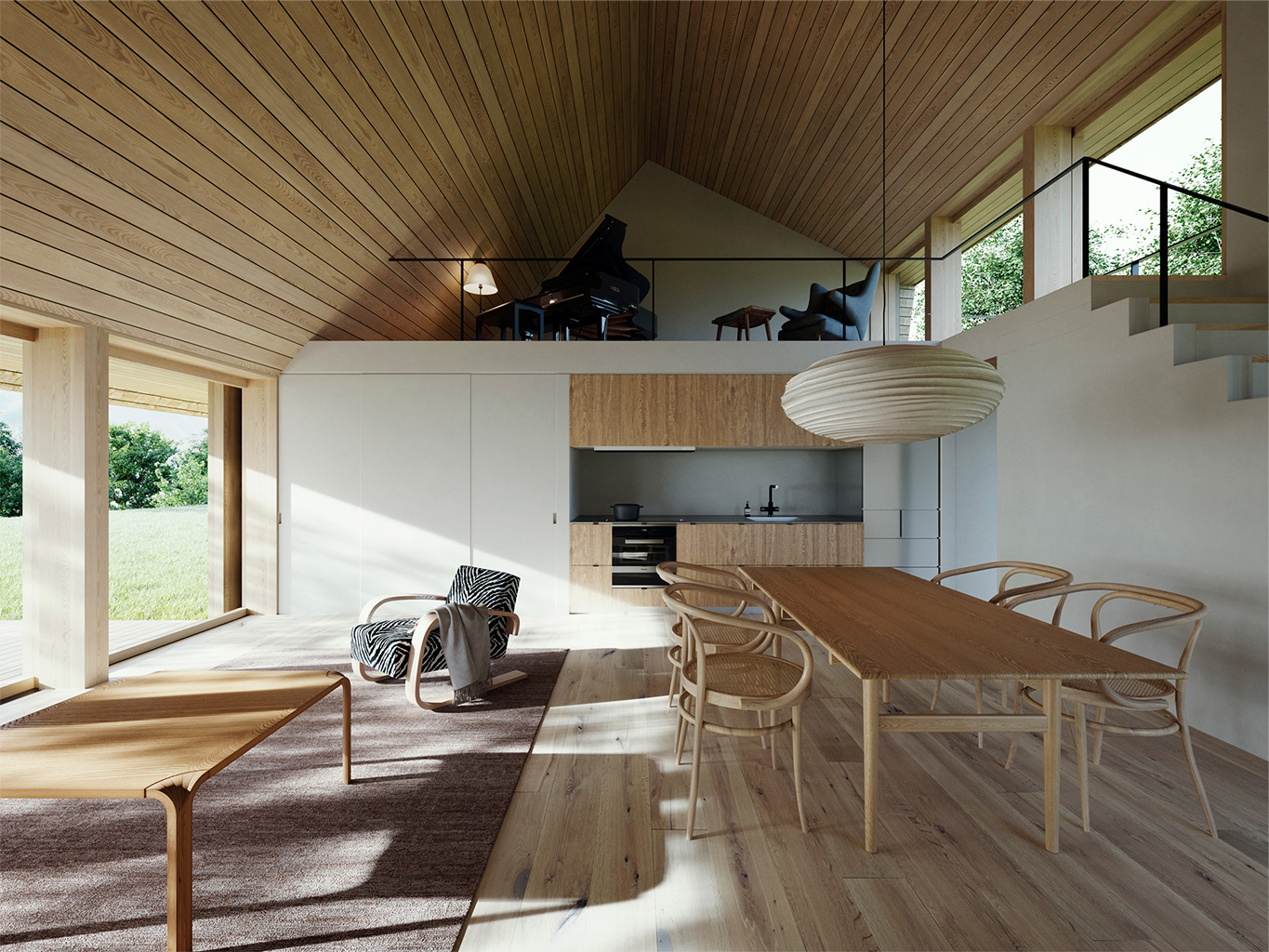Cokuun
We received a request from a world-renowned barista to design a tea room. More precisely, he wanted to create an interactive environment between host and guest for coffee, inspired by the traditional tea room in tea culture. The vision was to deliver a supreme cup of coffee by blending carefully selected beans spontaneously, tailored to the personality and mood of each guest. This called for architecture that could act as a game-changer, elevating the experience of a single cup and redefining the role of the barista.
Rather than renovating the existing standard orthogonal room, we proposed placing a Hojo hermitage - small pavilion at the center of the space. This transformed the ordinary room into a setting that felt like a new kind of natural environment, inviting interaction. Rotating the pavilion 45 degrees created four corners, which we used to incorporate typical tea room elements: a waiting area, a decorative alcove, a preparation space, and a crawl-through entrance, turning the interior into a garden-like experience. Making the pavilion self-standing introduced certain interior restrictions, necessitating the use of fire-resistant wood. To address cost and workability, we opted for high-pressure wood wool cement boards as the primary structural material.
We then refined the pavilion’s surfaces, creating a shell-like form through three-dimensional beveling. To construct these curves using cement boards, we discretely filled the surfaces with hexagonal panels. Connecting the panels at their vertices gave the joints a resemblance to the "arare" (hailstone pattern) on a traditional tea kettle. Inspired by this, we experimented with perforating the panels, creating an insect-eaten effect. This design choice not only emphasized asymmetry but also formed windows that allowed indirect light to filter into the space. Painting the panels black to echo the look of ironware, we found that the beveling effect evoked the spatial expanse of a historical tea room, Taian. The cement boards gradually began to resemble bamboo latticework "Takekomai", so we applied a rust-like finish, using a paint mixed with iron and wood powder to create a texture reminiscent of earthen walls.
Information
| Design |
VUILD |
| Structure |
yasuhirokaneda STRUCTURE |
| Lighting |
TILe |
| Construction |
VUILD, Roovice |
| Photo(1,5,6,8) |
Hayato Kurobe |
| Photo(2,3,4,7,9) |
Gottingham |









